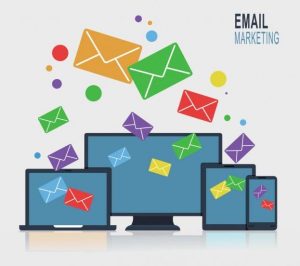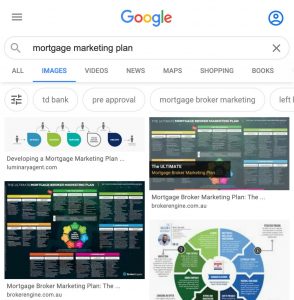Email marketing is crucial for helping small businesses build their audience. Roughly 81 percent cite it as their main channel for acquiring customers, and 80 percent rely on it for retention.
And this is no surprise when the average ROI for email marketing is 122 percent, and it’s around 40 times more effective for acquiring new customers than Twitter and Facebook combined.
But it’s not just a case of sending the same generic email to every contact and hoping they’ll open them. Customers will only read messages and take the desired action when an email engages them.
Small businesses need the right strategy to reach target customers, attract clicks, and drive traffic. Here are the five most important steps to focus on.
1. Define the Target Audience
Using email marketing to win new customers becomes harder than it has to be when it’s unclear who the emails should actually be designed for.
Start collating information on target customers by inviting website visitors to answer a few questions through a brief live chat or a questionnaire. This should be framed in a polite and friendly way to avoid disrupting their experience.
Aim to find out how old they are, what they look for in marketing emails, how often they would prefer to receive promotional emails, which other brands they receive messages from, and reasons they might have unsubscribed from mailing lists in the past.
Gathering this data makes building buyer personas easier. These help businesses identify the different customer types they need to target and segment their contact list, so they send more relevant emails.
Buyer personas have empowered 56 percent of businesses to find higher-quality leads, and 36 percent have shortened their sales cycles.
2. Keep Emails Simple and Engaging
Marketing emails should be simple and to the point, particularly for small businesses building their audience.
It may be tempting to add plenty of visuals and animations to stand apart from competitors. But customers care more about relevance and value. Roughly 33 percent of consumers will ignore emails that don’t include deals for free shipping or discounts, and helpful content is a deciding factor for 50 percent.
In effective marketing emails, the presentation should enhance the content, not distract from it or disrupt it. Designs need to be eye-catching, true to the business’s style, and consistent.
Calls-to-action must be brief and clear: subscribers should know exactly what action they’re expected to take. The text and background should contrast on calls-to-action buttons, to help them stand out from the surrounding material. Guide readers to take the next step in an intuitive way.
3. Personalization Makes a Big Impact
Marketing emails have to pop out of crammed inboxes, or subscribers will have no reason to open them. Personalized subject lines can make emails much more attractive, increasing open rates by as much as 50 percent.
That’s a massive boost from the open rate of 14.1 percent for non-personalized subject lines.
Emails should feature the subscriber’s name and be tailored to their shopping interests or behaviors. This goes back to building buyer personas and segmenting audiences to maximize engagement. Studying data gathered makes personalizing marketing emails simpler, though it still takes time to get right.
Split or A/B testing is a must. Send out two emails to one audience segment, both incorporating different text, presentation features, calls-to-action, images, discounts, and more.
After a fixed period (two weeks, one month), look at which email scored the highest engagement. This can inform future emails and help small businesses learn what not to do.
4. Automation Streamlines and Enhances Email Marketing
Automation tools help businesses save time, improve productivity, and increase revenue. Automated emails lead to 320 percent higher revenue than non-automated alternatives, which is why more than half of companies use marketing automation tools.
One of the key benefits of automated email marketing is sending messages in bulk rather than individually. Emails can still be personalized and tailored to suit different audience segments.
Another advantage of automated emails is scheduling. Small businesses can decide when their emails achieve the highest engagement and ensure they’re sent out at the right time, without needing to do so manually.
For example, emails can be sent to customers after they abandon their shopping carts automatically, which makes them twice as likely to complete the transaction. This keeps the customer engaged without any direct involvement from the business itself — the software takes care of it all.
5. A Strong Subject Line is Crucial
Businesses should never underestimate the power of their marketing emails’ subject lines. 47 percent of recipients open an email based on the subject line alone, and subject lines cause close to 70 percent of recipients to report messages as spam.
There are various factors to consider in creating the ideal subject line, including the number of words. Between six and 10 seems to be the sweet spot, with a 21 percent open rate. Subject lines consisting of 21 to 25 words yielded the lowest open rate at just 9 percent.
Think of subject lines as headlines on a news article. They have to be honest and to the point, rather than trying to win clicks by being misleading. Recipients will become less trusting of businesses that try to cheat them into opening emails.
*
Small businesses can implement these tips into their email marketing campaigns to target the right customers, create relevant emails, boost retention, and increase revenue. This process takes time and commitment but brings real results.
It also requires having the right tools. While there are several free email marketing services out there, make sure you pick one that has robust automation, a range of graphical templates that fit with your business and sending limits that actually allow you to reach your full mailing list without upselling to a pricier plan.
But if you pick the right tool, email marketing can be a powerful way to build your business.
Digital & Social Articles on Business 2 Community
(23)






